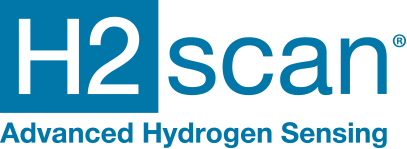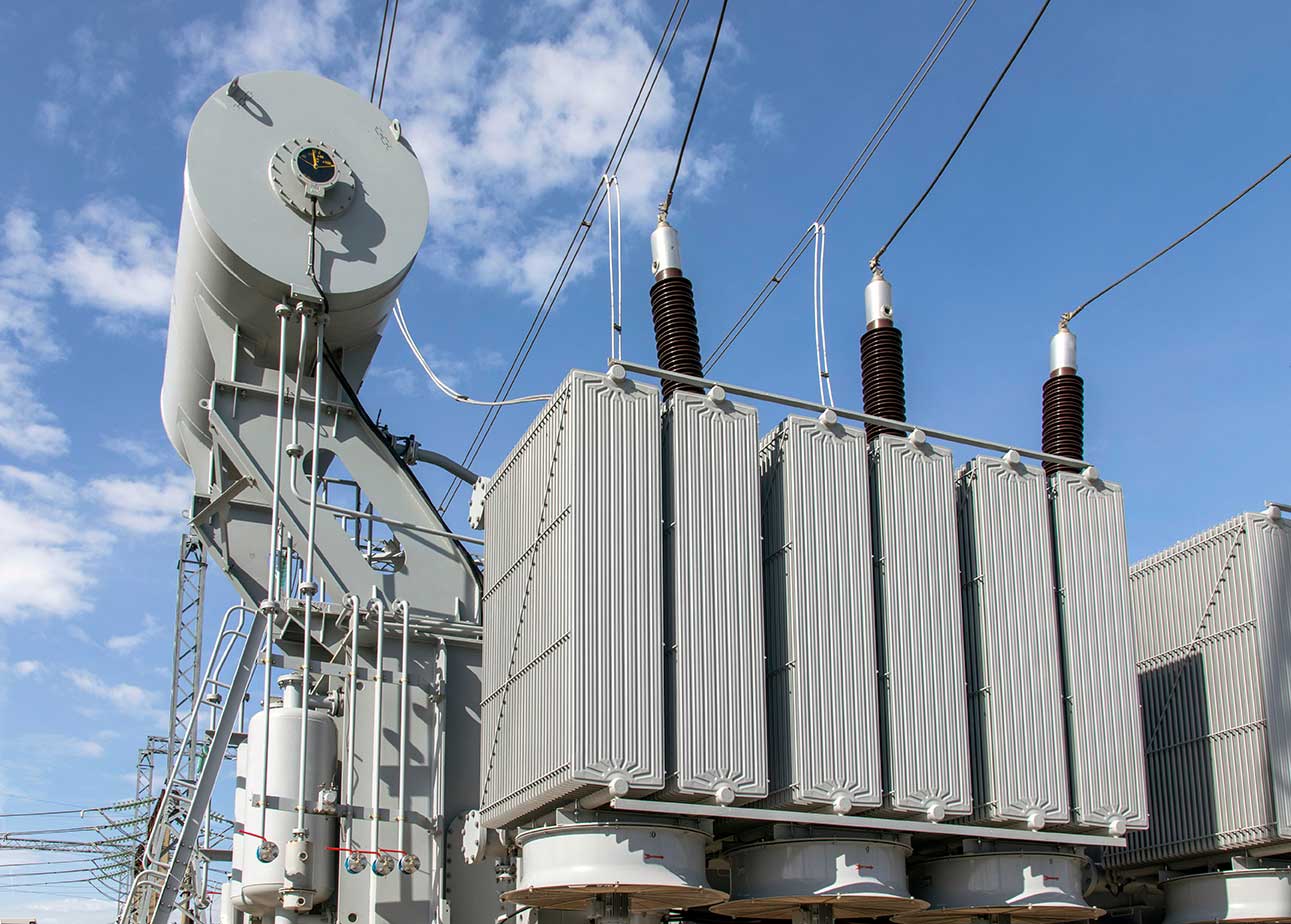
Answers to Your Transformer Dissolved Gas Analysis Questions and Fault Identification Methods
I am asked questions every day about the importance of transformer dissolved gas analysis (DGA) and how to use it for transformer monitoring, safety and maintenance, so I thought it would be interesting to get some answers from the source: the C57.104 Guide for the Interpretation of Gases Generated in Mineral Oil-Immersed Transformers1. This guide provides “detailed procedures for interpreting Dissolved Gas Analysis results” to transformer custodians. In addition, it provides users with:
- An overview of gas generation in transformers and DGA process.
- The purpose and application of DGA.
- DGA quality verification and limitations.
- DGA interpretation and norms.
- Fault type definitions and identification.
- Case studies and interpretation examples.
So, what is dissolved gas analysis?
Dissolved gas analysis is simply the identification, measurement and interpretation of the gases that are dissolved in a transformer’s insulating liquid. As the insulating systems age or when the transformer experiences a fault, gases are produced.
Detecting dissolved gas is pivotal for transformer monitoring and assessing well-being. Through DGA, one can pinpoint various abnormal occurrences within the primary tank, such as partial discharges, arcing, or excessive thermal conditions. Consequently, DGA emerges as a potent tool for comprehensive analysis.
The many different types of gases produced are hydrogen (H2), methane (CH4), ethane (C2H6), ethylene (C2H4), acetylene (C2H2), carbon monoxide (CO) and carbon dioxide (CO2). These gases are known as “fault by-products.” Other gases such as oxygen (O2) and nitrogen (N2) are also found in insulating liquids but are not considered “fault by-products” as they can be introduced to the insulating oils as a result of leaks or the use of a nitrogen preservation system. However, it is important to note that these gases still play an important role in transformer DGA analysis and interpretation.
Why is dissolved gas analysis important?
DGA can help us understand the health of the transformer and, in turn, provide early warnings, reduce unscheduled downtime, operating and maintenance expenses and increase safety for the overall system, community and employees. It can help us identify active and inactive fault conditions. When evaluating concentrations of dissolved gas in liquid, it is expressed as microliters per liter (μL/L); however, it is most commonly referred to or reported as parts per million by volume (ppm v/v) or just ppm.
The particular combination of gases or the gas profile varies based on the “nature of the fault process and is related to the energy level and temperature at the fault location.” The new Figure 1 found on page 18 of the guide provides a clear visual of the “relative percentage of dissolved gas concentrations in mineral oil as a function of temperature and fault type.” What can be observed is that hydrogen is present in every known fault type.
The percentage of hydrogen dissolved in the oil at lower temperature faults can be greater than other low temperature fault gases such as methane (CH4) and ethane (C2H6). In addition, at high temperature faults, you will observe the relative gas concentrations of hydrogen (H2) increase and tend to keep pace with acetylene (C2H2).
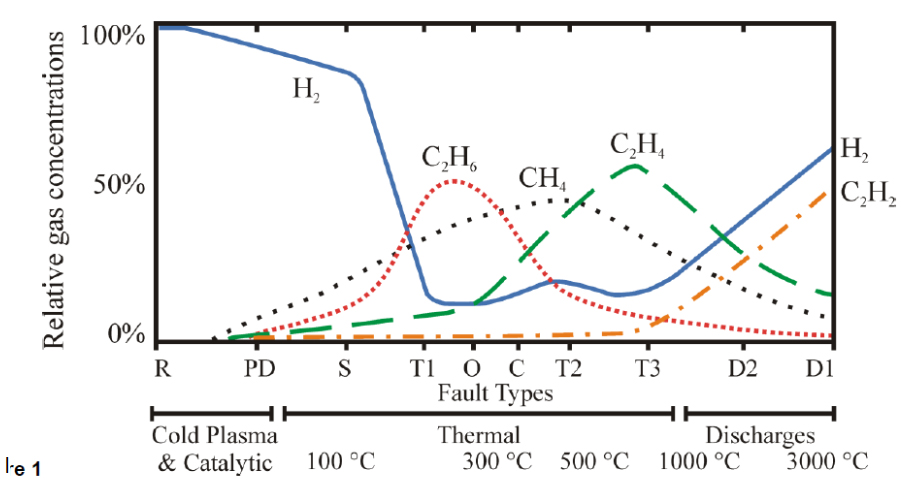
Fault Identification Methods
What I find most interesting in the guide is Annex D, which demonstrates all fault identification methods (Key Gas Method, Doernenburg Ratio and Rogers Ratio, Duval Triangles 1-4-5 and Pentagons 2-5). The Key Gas, Doernenburg and Rogers Ratios are summarized in table 1.
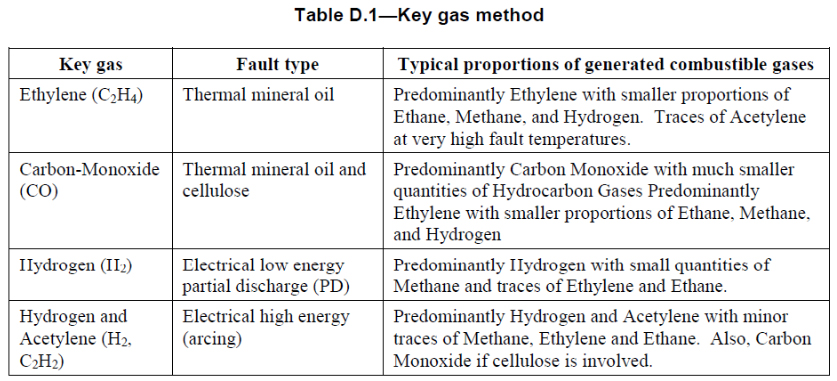
One key point is that with the Key Gas method, one will always receive a diagnosis; however, the number of wrong fault identifications can range from 30%-50%, leading to a misdiagnosis.
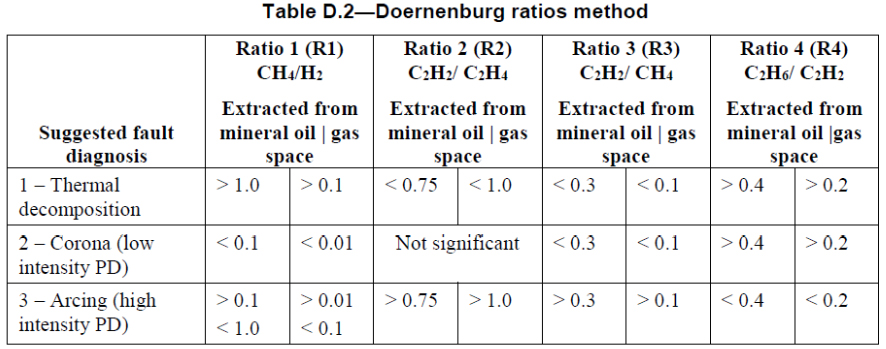
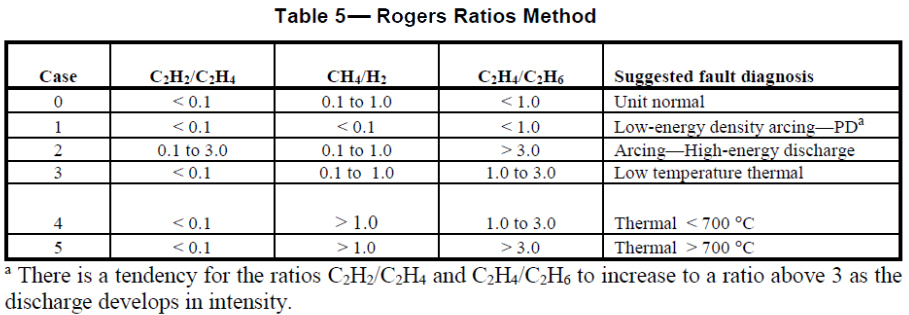
With the ratios methods, there are times when you will not arrive at a diagnosis because the ratios do not align.
Speaking of ratios, there are other useful gas ratios for fault identification. The ratio of O2/N2 helps to identify if the transformer is a free-breathing (open) transformer or a sealed unit with a nitrogen blanket. The C2H2/H2 ratio values >3 can help to identify if there is a leak or contamination from the tap-changer compartment to the main tank.
You will always be given an answer when it comes to Duval’s Triangle. However, it is important to be sure that one of the three gases is above the nominal or normal value for that gas in the transformer. Below is an example of Duval’s Triangle 1 Method.
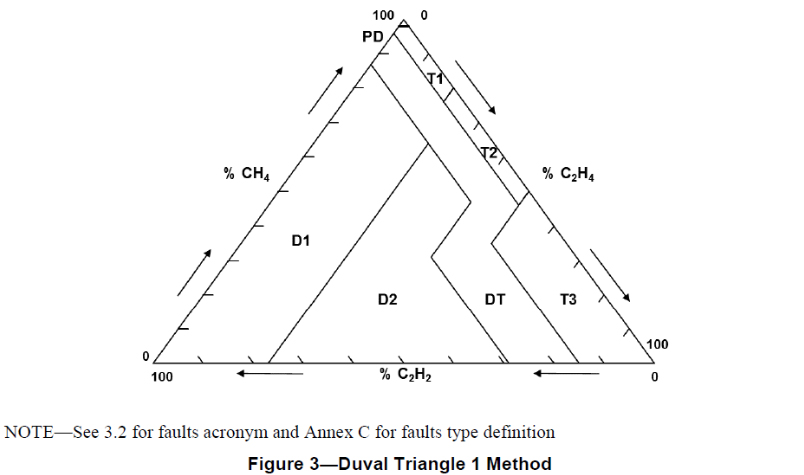
Duval’s Pentagons are additional fault identification methods that will help to reinforce a diagnosis.
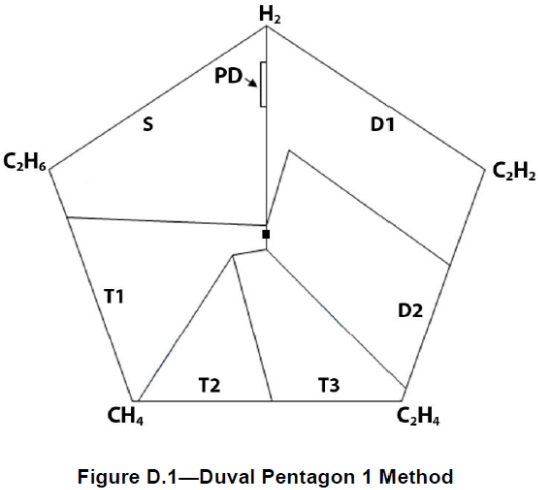
In addition to the traditional or more well-known methods of gas interpretation, you will find a relatively new method in Annex F – Evaluation of Fault Severity – Alternative Method.
While there are many different methods to evaluate the dissolved gas analysis in liquid insulation, you are always safe measuring hydrogen. It is a key gas, and early detection can help avoid potential catastrophic failures. Hydrogen is one of the first gases to evolve from oil breakdown and can serve as a watchdog or smoke alarm to a potential hazard. Even though things may appear normal when an alarm is triggered, the transformer monitoring device is designed so that when it detects an abnormal condition in the transformer, it can alert you that your situation has gone from normal to abnormal and that further investigation is needed.
Hydrogen detection systems can be a first line of defense, helping you to improve your transformer monitoring program and can easily transition your monitoring program from one that is time-based to a condition-based program.
Have more questions about transformer dissolved gas analysis for your transformer fleet?
Contact us to talk directly to one of the H2scan applications engineers and visit our Transformer industry page to learn more about H2scan’s solutions for transformer monitoring.
